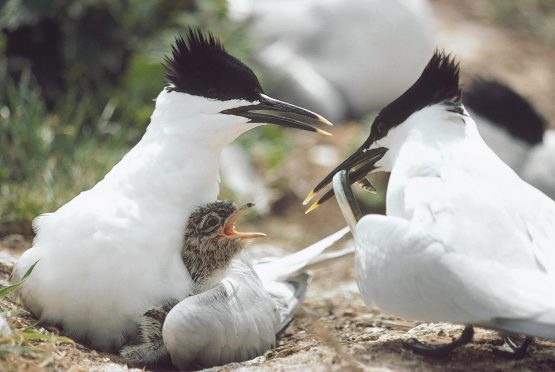Councillors will today scrutinise plans for a 21-mile long protection area for threatened local sea birds along the north-east coast.
Terns, black-legged kittiwakes and herring gulls could benefit from the proposals by Scottish Natural Heritage (SNH) should Aberdeenshire Council’s Formartine area committee back the safeguarding measures today.
SNH’s plans will involve expanding the current Ythan Estuary, Sands of Forvie and Meikle Loch special protection area (SPA) so that it runs from Cruden Bay to Aberdeen.
SPAs are established through European Parliament legislation in order to conserve wild birds, their nests, eggs and habitats.
Within the Ythan Estuary, Sands of Forvie and Meikle Loch SPA, bird species under particular threat include sandwich terns and little terns.
RSPB Scotland has placed both under an “amber” status, with the number of breeding pairs in the UK at about 12,000 and 1,900 respectively.
The main reason for the expansion of the SPA is to encompass foraging areas used by terns breeding in the region.
SNH’s plans will involve merging the new SPA with the current one in existence from Buchan Ness to Collieston.
This area supports 95,000 birds including black-legged kittiwakes, common guillemot, herring gulls, European shags and northern fulmar.
The council’s director of infrastructure services, Stephen Archer, said the plans were designed to safeguard marine birds on the north-east coast which are “rare or vulnerable”.
He added that no developments or “operations requiring planning permission” could be permitted that may damage a site such as an established SPA.
Mr Archer added: “Consent for development beyond MLWS (mean low water spring), such as offshore windfarms, is the responsibility of Marine Scotland, and although in that case the planning authority are responsible for consenting the land-based elements of those projects this does not affect the feeding grounds of the terns.”
Environmental campaigner and local planning consultant, Debra Storr, said: “Forvie already is an absolutely international level area for bird watchers, particularly for ground nesting birds and the terns – who are under heavy pressure.
“The extension to protect these birds all along the coast can only help them.
“It is very important the habitats and are still useful for wildlife actually have good levels of protection.”
